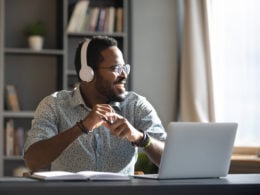Figuring out how to position your startup business in exactly the right market segment was accomplishment enough. Your new business has done well and grown, confirming all the hard analysis you did in the first place.
Now, it might be time for you to follow up that performance with an encore by considering expansion for your business into an additional product or service segment, a new demographic slice of the marketplace, or even a brand extension or a second brand altogether.
You’ll have to do a lot of analysis again to figure out whether your balance sheet, your startup’s infrastructure, your own executive time and other factors would allow you to make such a leap at the moment.
Follow the path of least resistance
The most sensible option for diversification is usually to move your business into a segment or a market that’s clearly adjacent to what you’re already doing.
That might simply involve finding other groups of customers who might buy the same thing. “The more you can make the new niche markets like your original, the easier it will be for you to relate to them and convince them that you are eminently qualified to serve them,” says Larry Mersereau, a Valparaiso, Ind.-based sales and marketing consultant.
Cathi Coan did just that when she realized that there were tons of consumer equipment going into landfills, in addition to the corporate computer waste that is recycled and destroyed by Techway Services Inc., her company based in Grapevine, Texas. So Techway has incorporated a new business that simultaneously diverts consumers’ computer equipment from landfills and raises money for charities.
Jump on an obvious business opportunity
The success of your business will create chances for diversification that you may not have foreseen – or at least bring to fruition some of them that you hoped would develop. When that moment occurs, you must capitalize!
For Heidi Flammang, the realization hit her once she had thoroughly established her Camp Bow Wow brand of “doggy” day and overnight camps and found great demand last year when she decided to franchise the business concept. The founder of the Boulder, Colo.-based business already has sold 140 franchises nationwide and grossed nearly $5 million last year.
Next act? Flammang has launched a line of retail products like backpacks, stuffed animals and squeaky toys that follow the “mountain-lodge” theme of Camp Bow Wow. And she’s going to retail them in the lobby space of the company’s camps as well as online. “Each camp has 1,500 to 2,500 customers that come on a regular basis and are huge dog lovers,” Flammang says. “It was obvious what we should do.”
Come up with a new brand to create appropriate distance
You may want to move consumer perception of your products upscale or create an opportunity for a new line that would be related to, but differentiated from, your initial lineup. The best way to do that might be to create a second brand, from name to packaging.
That’s what Anthony Sosnick did after his Anthony Logistics for Men brand of personal-care products proved to be a big hit out of the box. Some consumers complained that it was pricey. But Sosnick, founder of the New York City startup, wanted to maintain the brand’s premium image and vast product selection. So he created another brand, Anthony Sport for Men, which offered lower prices and narrower selection.
And Kathi Johnson had operated Charmant, a women’s casual clothing boutique in Albany, N.Y., for a dozen years but began to see sales shrinking due to competition. So she decided to plunge into the world of consignment with a new store. But she named it New 2 You instead of using the Charmant brand, and potentially confusing customers.
Listen to what your customers are asking for
Listen to what your customers are telling you they want, and you may find big new opportunities for your business. They know you already, so you don’t have to sell yourself to get in the door or to persuade them that your new segment is worth a look.
Sometimes, customers will be direct and ask you to consider adding a line of products or services. That’s what happened to Justin and Carmen Kennedy at Imagery Media, a New York City startup business that specialized in online “advergames” for big marketers. Then Canon, the camera and copier manufacturer, approached the Kennedys about coming up with some online-training modules for Canon employees. And now this is the fastest-growing business segment for Imagery.
Our bottom line
Success begets success, so it could be natural to look at expanding your startup business through an additional product or a second brand. In so doing, concentrate on the market opportunities that are most adjacent to what you already do well.






